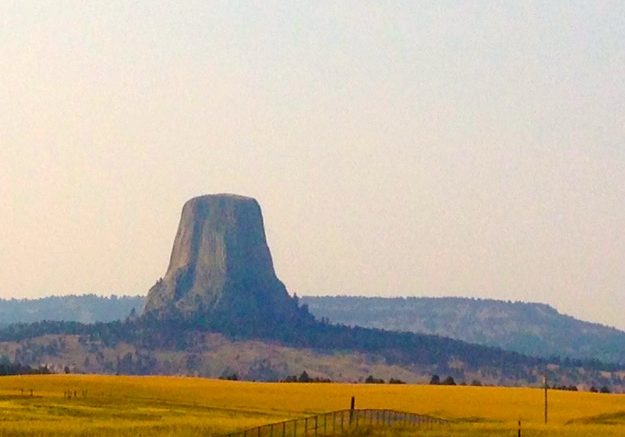
Devil’s Tower National Monument in Wyoming was designated as the first national monument by President Teddy Roosevelt in 1906.
By Julia Conley
Common Dreams (8/24/17)
Environmental groups denounced the Interior Department’s recommendation to President Donald Trump on Thursday that he reduce the size of some of the country’s national monuments. While a number of outlets framed the story by reporting that Secretary Ryan Zinke was recommending against the elimination any monuments, a two-page summary (pdf) released by the Interior Department made clear his position that some of the country’s protected lands are too large.
Trump ordered Zinke to review 27 monuments in April, declaring that President Barack Obama’s use of the Antiquities Act of 1906 to establish new monuments amounted to an “egregious abuse of federal power.”
The review angered groups including the Sierra Club and Utah Diné Bikéyah, a Native American coalition that had spent years campaigning for a national monument designation for Utah’s Bears Ears region, a sacred tribal area. The latter group told the Associated PressThursday that it was “prepared to launch a legal fight against even a slight reduction in size.”
“An administration that defends monuments to slavery but destroys protections for Indigenous lands and wilderness is morally bankrupt.”
Ben Schrieber of Friends of the Earth called Zinke’s recommendation to shrink some monuments “another in a long line of blatant handouts to the oil and gas industry” and a “giveaway to corporate polluters.”
Greenpeace called the Interior Department’s proposal “the direct result of Secretary Zinke favoring the voices of oil and gas executives instead of the people who submitted nearly 3 million public comments opposing changes to these important places.” Last month, Zinke signed an order to expand oil and gas development on federal lands.
The exact phrasing of Secretary Ryan Zinke’s review was not made public after it was submitted to the White House, but in the department’s summary he wrote that the criteria for national monuments had become overly broad:
“While early monument designations focused more on geological formations, archaeological ruins, and areas of historical interest, a more recent and broad interpretation of what constitutes an ‘object of historic or scientific interest’ has been extended to include landscape areas, biodiversity, and view sheds.”
The summary promoted a return to using some parts of national monuments for so-called “traditional uses” by “industries such as grazing, timber production, mining, hunting and fishing, and motorized recreation.”
Zinke also made the claim that while the use of national parks and monuments as tourist attractions, which contributed to $18.4 billion dollars last year to the national economy as 330 million people visited them, can be burdensome for the government. Tourism “places an additional burden and responsibility on the Federal Government to provide additional resources and manpower to maintain these lands to better support increased visitation and recreational activities,” he said.
Jamie Henn of 350.org noted on Twitter the Trump administration’s insistence in recent weeks on defending certain monuments, juxtaposed with its disregard for others: “An administration that defends monuments to slavery but destroys protections for Indigenous lands and wilderness is morally bankrupt.”
(This work is licensed under a Creative Commons Attribution-Share Alike 3.0 License.)
(Commoner Call photo by Mark L. Taylor, 2017. Open source and free to use with link to www.thecommonercall.org )

